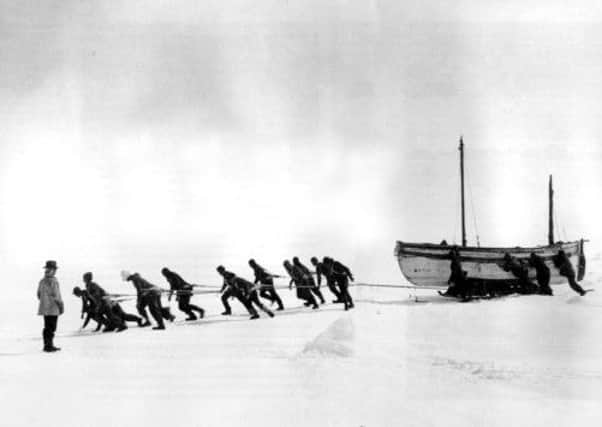Scottish animator set for South Georgia voyage


From 1904 to 1966 the tiny island of South Georgia in the South Atlantic was the southern capital of whaling and where some 175,250 whales were processed at its seven shore stations.
The island also hit the world’s headlines in 1915 when the heroic explorer Sir Ernest Shackleton finally reached one of the whaling stations after he and six men spent 16 days crossing 1,000 miles of open ocean when their vessel, the “Endurance” became trapped in the Antarctic ice.
Advertisement
Hide AdAdvertisement
Hide AdOn 13 November, Scott Smith, a PhD student at Dundee University, will set out for South Georgia to begin a two month research project to use computer animation techniques to digitally reconstruct the island’s now abandoned industrial whaling sites.
‘Understanding history’
Supported by the South Georgia Heritage Trust, the project is aimed at enabling tourists and visitors who travel to the island to gain a new understanding of the island’s rich cultural history.
Mr Smith, 42, was previously a Senior Lecturer and Programme Director in 3D Computer Animation at the University of Wales. He is now studying for a PhD at Dundee University’s Duncan of Jordanstone College of Art and Design .
He said today: “The main objective of the research is to take the existing knowledge of the whaling stations on South Georgia Island and repackage it, be it cinema, virtual reality, computer or mobile screen displays that enables a wider public understanding of the historical context and cultural heritage of the whaling industry.”
‘Impact on island’
Mr Smith continued: “On South Georgia, the loss of the whaling industry has had a fundamental impact on the island’s habitation and much of the former bustling whaling stations lie empty, although the area’s native flora and fauna have made significant recoveries since the end of the commercial whaling in the region. Computer visualisation can be a very effective way of preserving the practices that once shaped and served communities.”
A university spokeswoman explained: “South Georgia is a remote and largely hostile environment due to its geographic location in the Southern Atlantic Ocean at the point of Antarctic convergence. The former whaling station at Grytviken hosts the burial site of the great explorer Sir Ernest Shackleton and a museum managed by the South Georgia Heritage Trust,.
“The museum, based in a former whaling manager’s villa, charts the history of the island’s whaling heritage and will be Smith’s base during his visit. Once home to several industrial whaling sites and some 2,000 workers, with the cessation of whaling in the 1960s, the community vanished in one season.
“Today the island has no permanent residents, save for a small number of scientists inhabiting the British Antarctic Research Stations, Government Officials and the seasonal museum team.”
Pivotal
Advertisement
Hide AdAdvertisement
Hide AdProfessor Bjorn Basberg, a trustee of SGHT, said Mr Smith’s research could be pivotal in their comprehension of the island’s history. He said: “Computer animation is one way to visualise how these former industrial sites looked and operated. Scott Smith’s project will be of value for visitors understanding the remains of these complex former industrial plants as well as giving insight into the island’s unique heritage.”